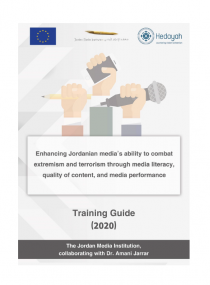Jordan Media Institute - Amman
An analytical study monitored and analyzed news and opinion articles published by al Ra’i and al Ghad, two of Jordan’s largest newspapers, during the popular protests that took place in al-Dakhliya Circle in 2011, and in the Fourth Circle in 2018.
The study, which was prepared by Hussein al-Rawashida, a Master’s student in Journalism and New Media at the Jordan Media Institute (JMI), was designed to understand the two newspapers’ coverage of these protests, and the extent of their interest in them, and reveal areas of similarity and difference in their coverage of the events, using the theory of media frameworks.
Al-Rawashdeh discussed the results of his study on Monday at JMI, in the presence of four professors who specialize in the field. He said that this study falls in the category of descriptive research and that it adopted a surveying methodology for the content that was published by the two newspapers, al-Ra’i and al-Ghad. The study limited itself to content published during between March 24 and April 23, 2011, when protests demanding reform took place in al-Dakhliya Circle, in downtown Amman, and from May 30 to June 28, 2018, when thousands participated in protests near the Prime Ministry’s headquarters at the Fourth Circle, culminating in the resignation of the then-current government.
The study reached several important conclusions. First, that the two papers were more interested in the popular protests in 2011, with relatively less interest in the protests of 2018. It also found that there was a focus on two main areas: the activities of the protests and the political reform, relating to two primary actors: the government and the popular movements. While the two papers published news coverage of the events, Al Ra’i was more inclined to publish opinion pieces than al-Ghad, and although the two papers both obtained their news largely through reporters, al-Ra’i relied on the Jordan News Agency (Petra) more than al Ghad did for its coverage.
The coverage by the two papers was mostly below the fold, and Al-Rawashdeh’s study found that the opinion articles in the two papers “in general” highlighted positive positions towards the protests, although al-Ra’i was more inclined towards opposition to the protests. The publishing of other opinion pieces, such as news analysis, cartoons, and journalistic interviews was less common in both newspapers.



